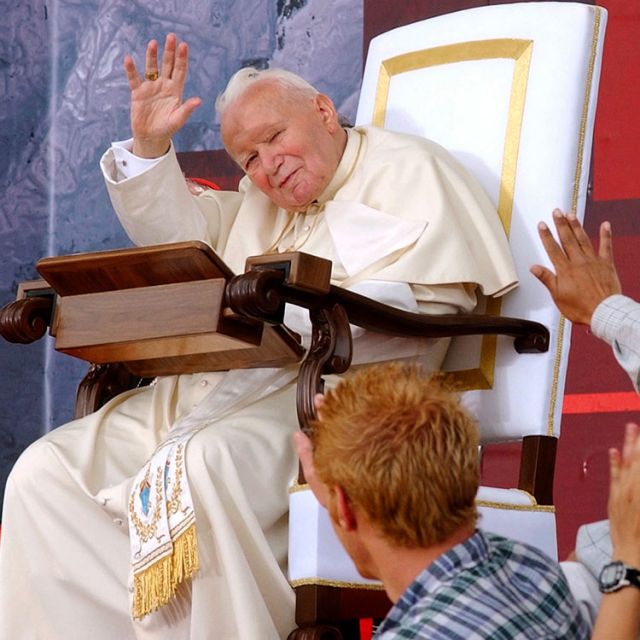I first saw Karol Wojtyla on television on Oct. 16, 1978 when he stepped onto the balcony at St. Peter’s. He was an unknown Polish cardinal unexpectedly elevated to be St. Peter’s successor on Earth. I heard him say, in a dozen languages: “Be not afraid. Open your hearts to Christ.”
For most of my adult life the light of the world, it seemed to me, was embodied in a unique way in Pope John Paul II.
It is impossible to convey his achievements in a column. Let me mention just one year, the Great Jubilee Year of 2000 when John Paul II: made pilgrimages to Jerusalem and to the historic Old Testament sites associated with Abraham and Moses; initiated year-long vocational celebrations; prepared an English publication of the Catechism of the Catholic Church; introduced the Divine Mercy devotions; proclaimed a new emphasis on cleansing the conscience of the Church; and initiated the phenomenon known as World Youth Day.
For the first World Youth Day in Rome, more than two million pilgrims needed accommodation and 15 young people were billeted at the pope’s summer residence at Castel Gandalfo. One lucky young man from Oakville, Ont., was asked if he had any trouble talking with the Holy Father. He said: “Oh no, we just talked about the Toronto Maple Leafs.”
At the closing Mass, the pope said to the World Youth Day pilgrims: “It is Jesus in fact you seek when you dream of happiness; He is waiting for you when nothing else satisfies you; He is the beauty to which you are so attracted; it is He who provokes you with that thirst for fullness that will not let you settle for compromise; it is He who urges you to shed the masks of a false life; it is He who reads in your hearts your most genuine choices, the choices that others try to stifle. It is Jesus who stirs in you the desire to do something great with your lives, the will to follow an ideal, the refusal to allow yourselves to be ground down by mediocrity.”
In the final three years of John Paul II’s pontificate he gave the world a visual lesson in the redemptive possibilities of suffering.
In his last years John Paul II could no longer use words as effectively, but his witness only became stronger. As Vatican reporter John Allen wrote, the pope was transformed from the supreme pastor of the Catholic Church into “…a living symbol of human suffering, in effect, an icon of Christ on the Cross.”
In the late afternoon of April 2, 2005 the pope lay dying in his Vatican apartment. Just before 7 p.m. an attending sister placed her head next to his and heard him whisper: “Let me go now to the Father’s house.” He slipped into a coma. Two hours later his once strong heart ceased to beat.
On hearing the news, a crowd outside began the chant of “Santo Subito!”(“Sainthood Now!”)
The chants and prayers of millions from every corner of the world will soon be realized. Pope Francis will declare a modern saint, one who was a faithful priest, a courageous bishop, a prophetic pope and, above all, in American writer George Weigel’s definitive phrase, “a witness to hope.”
(Hunter is Professor Emeritus in the Faculty of Law at Western University in London, Ont.)


